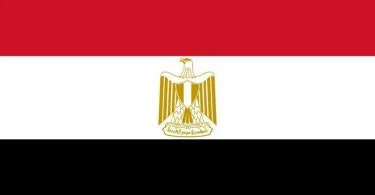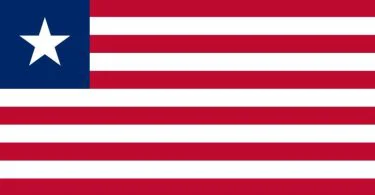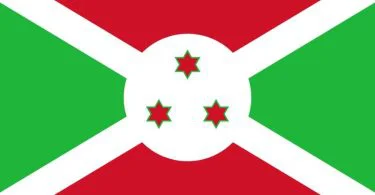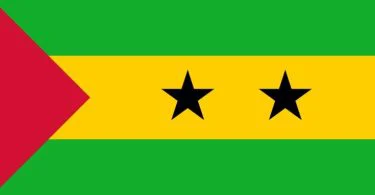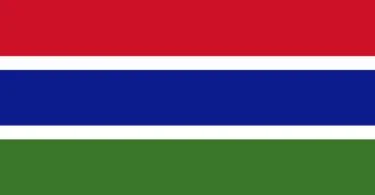PART 1. GENERAL PRINCIPLES CHAPTER I. THE STATE AND THE CONSTITUTION 1. The State in transition to socialism 2. The territory 3. The capital 4. The flag 5. The coat of arms 6. The anthem 6A. The pledge 7. Duty to respect national symbols 8. Supremacy of Constitution CHAPTER II. PRINCIPLES AND BASES OF THE POLITICAL, ECONOMIC AND SOCIAL SYSTEM 9. Sovereignty belongs to the people 10. Political parties 11. [Repealed by Act No. 10 of 2003] 12. Local government 13. Objective of political system 14. Goal of economic development 15. Further goal of economic development 16. State to foster forms of development 17. Private enterprise 18. Land to the tiller 19. Personal property 20. Right of inheritance 21. Role of labour 22. The right and the duty to work 23. Right to leisure 24. Right to medical attention and social care in case of old age and disability 25. Duty to improve environment 26. Right to housing 27. Right to education 28. Youth 29. Women’s participation in public decision-making 30. [Repealed by Act No. 10 of 2003] 31. Protection of citizens resident abroad 32. Duty to prevent crime and protect public property 33. Duty to defend State 34. Abolition of discriminatory distinctions 35. National culture 36. Land and the environment 37. External relations 38. National co-operation for development of economy 38A. Democratic state with a healthy economy 38B. The best interest of the child 38C. Adoption in best interest of the child 38D. Child’s right to maintenance and accommodation 38E. Formal education compulsory 38F. Vilification of religion 38G. Public service to be free from political influence 39. Guiding principles and objectives CHAPTER III. FUNDAMENTAL RIGHTS AND FREEDOMS OF THE INDIVIDUAL 40. Fundamental rights and freedoms of the individual CHAPTER IV. CITIZENSHIP 41. Persons who continue to be citizens on commencement of Constitution 42. Persons entitled to be registered as citizens 43. Persons born in Guyana after commencement of Constitution 44. Persons born outside Guyana after commencement of Constitution 45. Marriage to citizen of Guyana 46. Deprivation of citizenship on acquisition of, or exercise of rights of, another citizenship 47. Commonwealth citizens 48. Powers of Parliament 49. Interpretation CHAPTER V. SUPREME ORGANS OF DEMOCRATIC POWER 50. Supreme organs of democratic power CHAPTER VI. PARLIAMENT Composition of Parliament 51. Establishment of Parliament 52. Composition of the National Assembly 53. Qualifications for election as members 54. Tenure of seats of members of the National Assembly 55. First meeting of the National Assembly 56. Speaker and Deputy Speaker 57. Clerk and Deputy Clerk 58. Unqualified persons sitting or voting Elections 59. Qualifications and disqualifications for electors 60. Electoral system 61. Times for elections under article 60 (2) 62. Elections Commission 63. Filling of casual vacancies 64. Determination of questions as to membership and elections Powers and Procedure of Parliament 65. Legislative power 66. Alternation of this Constitution 67. Attendance of the President in the National Assembly 68. Regulation of procedure, etc Summoning Prorogation and Dissolution 69. Sessions of Parliament 70. Prorogation and dissolution of Parliament CHAPTER VII. LOCAL DEMOCRACY Local Democratic Organs 71. Local Government 72. Local Government areas 73. Election of members of regional councils 73A. Lower tier of local government to be represented at the tier above 74. Duties of local democratic organs 75. Power to take decisions 76. Power to raise revenue 77. Regional development programme to be integrated into the national development plans 77A. Parliament to provide criteria for allocation of resources by local democratic organs 78. Local government elections 78A. Local Government Commission 78B. Representativeness and accountability of local democratic organs to the electorate 79-81. [Repealed by Act No. 14 of 2000] 82-88. [Chapter VIII repealed by Act 14 of 2000] CHAPTER IX. THE PRESIDENT 89. Establishment of office of President 90. Qualifications for election 91. Election of President 92. Tenure of office of President 93. Removal of President on grounds of incapacity 94. Removal of President for violation of Constitution or gross misconduct 95. Vacancy in office of President 96. Discharge of functions of President during absence, illness, etc 97. Oath to be taken by President 98. Remuneration, etc., of President CHAPTER X. THE EXECUTIVE 99. Executive authority of Guyana 100. Establishment of office of Prime Minister and other Ministerial offices 101. The Prime Minister 102. Vice-Presidents 103. Ministers 104. Ministerial appointments during dissolution 105. Non-elected Ministers to sit in Assembly 106. The Cabinet 107. Allocation of portfolios 108. Tenure of office of Ministers 109. Minister’s absence or illness 110. Leader of the Opposition 111. Exercise of President’s powers 112. Attorney General 113. Parliamentary Secretaries 114. Oaths of Ministers, etc 115. Permanent Secretaries 116. Director of Public Prosecutions 117. Secretary to the Cabinet 118. Sub-committees of Cabinet 119. Standing Committees 119A. Parliamentary Standing Committee for Constitutional Reform 119B. Parliamentary Sectoral Committees 119C. Standing committee to address matters relating to appointment 119D. Parliamentary Oversight Committee on the Security Sector 120. Constitution of offices 121. Prerogative of Mercy 122. Ombudsman CHAPTER XI. THE JUDICATURE The Supreme Court of Judicature 122A. Independent Judiciary 123. Establishment of Supreme Court of Judicature 124. Constitution of Court of Appeal 125. Constitution of High Court Judges of the Supreme Court of Judicature 126. Interpretation 127. Appointment of Chancellor and Chief Justice 128. Appointment of Justices of Appeal and Puisne Judges 128A. Appointment of part-time Judges 129. Qualifications of Judges 130. Attendance of additional Judge in Court of Appeal and High Court 131. Tenure of office of Judges 132. Oaths of Judges Appeals 133. Appeals on constitutional questions and fundamental rights CHAPTER XII. THE SERVICE COMMISSIONS 134. The Judicial Service Commission 135. The Public Service Commission 136. The Teaching Service Commission 137. The Police Service Commission PART 2. SPECIFIC RULES TITLE 1. PROTECTION OF FUNDAMENTAL RIGHTS AND FREEDOMS OF THE INDIVIDUAL 138. Protection of right to life 139. Protection of right to personal liberty 2 140. Protection from slavery and forced labour 141. Protection from inhuman treatment 142. Protection from deprivation of property 143. Protection against arbitrary search or entry 144. Provisions to secure protection of law 145. Protection of freedom of conscience 146. Protection of freedom of expression 147. Protection of freedom of assembly, association and demonstration 148. Protection of freedom of movement 149. Protection from discrimination on the grounds of race, etc 149A. Right to work 149B. Right to pension and gratuity 149C. Right to participate in decision-making processes of the State 149D. Equality of persons before the law 149E. Equality of status 149F. Equality for Women 149G. Indigenous peoples’ right 149H. Right to free education 149I. Right to establish private schools 149J. The environment 150. Provisions for time of war or emergency 3 151. Reference to tribunal in certain cases 152. Saving of existing laws and disciplinary laws 153. Enforcement of protective provisions 154. Interpretation TITLE 1A. PROTECTION OF HUMAN RIGHTS 154A. Human rights of the individual TITLE 2. PARLIAMENT 155. Disqualifications for election as members 156. Tenure of seats of members of the National Assembly 2 157. Speaker and Deputy Speaker 158. Clerk and Deputy Clerk 159. Qualifications and disqualifications for electors 160. Electoral system 160A. Political parties prohibited from causing ethnic division 161. Elections Commission 161A. Appointment of staff of Elections Commission; Secretariat of the Commission 161B. Role of political parties in the conduct of elections through the Elections Commission 162. Functions of the Elections Commission 163. Determination of questions as to membership and elections 164. Procedure for altering this Constitution 165. Regulation of procedure 166. Presiding in the Assembly 167. Oaths of members 168. Voting 169. Quorum 170. Mode of legislation 171. Introduction of Bills, etc 172. Privileges, etc., of members of the National Assembly TITLE 3. [Repealed by Act No. 14 of 2000] 173-176. [Repealed by Act No. 14 of 2000] TITLE 4. THE PRESIDENT 177. Election of President 178. Tenure of office of President 179. Removal of President on grounds of incapacity 180. Removal of President for violation of Constitution or gross misconduct 181. Salary and allowances of President 182. Immunities of President TITLE 5. THE EXECUTIVE Subtitle 1. Ministers, etc 183. Tenure of office of Ministers 184. Leader of the Opposition 185. Attorney General 186. Parliamentary Secretaries 187. Functions of Director of Public Prosecutions 188. Prerogative of Mercy 189. Advisory Council on Prerogative of Mercy 190. Functions of Advisory Council Subtitle 2. The Ombudsman 191. Appointment, etc., of Ombudsman 192. Matters subject to investigation by the Ombudsman 193. Excluded matters 194. Ombudsman’s functions on concluding an investigation, and reports to the Assembly 195. Power of Parliament to make supplementary provision 196. Interpretation TITLE 6. THE JUDICATURE 197. Tenure of office of Judges 9 Title 6A. DEFENCE AND SECURITY 197A. Defence and security TITLE 7. THE SERVICE COMMISSIONS The Judicial Service Commission 198. Composition of Commission 199. Appointment, etc., of judicial and legal officers The Public Service Commission 200. Composition of Commission 201. Appointment, etc., of public officers 202. Appeals to Public Service Commission 203. Appointment, etc., of Director of Public Prosecutions 204. Appointment, etc., of Auditor General 205. Appointments of Solicitor General and others 206. Appointments on transfer to certain offices The Teaching Service Commission 207. Composition of Commission 208. Vacation of office of appointed member of the Commission 209. Appointment of teachers The Police Service Commission 210. Composition of Commission 211. Appointment, etc., of Commissioner of Police and Deputy Commissioners 212. Appointment, etc., of other members of Police Force The Ethnic Relations Commission 212A. Ethnic Relations Commission 212B. Composition of Ethnic Relations Commission 4 212C. Ethnic Relations Commission Tribunal 212D. Functions of the Ethnic Relations Commission 212E. Reports 212F. Rules The Rights Commissions Commissions for the Promotion and Enhancement of the Fundamental Rights and the Rule of Law 212G. Rights Commissions 212H. Appointment 212I. Secretariat 212J. General functions 212K. Rights Commissions Tribunal 212L. Appeals 212M. Reports The Human Rights Commission 212N. Human Rights Commission 212O. Functions of the Human Rights Commission 212P. Secretariat The Women and Gender Equality Commission 212Q. Women and Gender Equality Commission 212R. Functions of the Women and Gender Equality Commission The Indigenous Peoples Commission 212S. Indigenous Peoples’ Commission 212T. Functions of the Indigenous Peoples’ Commission The Rights of the Child Commission 212U. Rights of the Child Commission 212V. Functions of the Rights of the Child Commission The Public Procurement Commission 212W. Public Procurement Commission 212X. Composition of the Public Procurement Commission 212Y. Appointment 212Z. Secretariat 212AA. Functions of the Public Procurement Commission 212BB. Appeals 212CC. Reports 212DD. Requirement to provide information 212EE. Public Procurement Commission Tribunal Principles for the Establishment of Commissions 212FF. Principles for the establishment of Commission Pensions 213. Protection of pension rights 214. Power of Commissions in relation to pensions, etc 215. Interpretation Public Service Appellate Tribunal 215A. Establishment and functions of the Public Service Appellate Tribunal TITLE 8. FINANCE 216. Establishment of Consolidated Fund 217. Withdrawals from Consolidated Fund or other public funds 218. Authorisation of expenditure from Consolidated Fund by appropriation 219. Authorisation of expenditure in advance of appropriation 220. Contingencies fund 221. Public debt 222. Remuneration of holders of certain offices 222A. Overarching clause on financial autonomy 223. Office and functions of Auditor General TITLE 9. MISCELLANEOUS 224. Rules of court 225. Removal from office of certain persons 226. Powers and procedure of Commissions 227. Disqualification for office of persons exciting racial hostility TITLE 10. INTERPRETATION 228. Appointments 229. Resignations 230. Vacation of office on attaining a prescribed age 231. [Repealed by Act No. 17 of 2000] 232. Interpretation FIRST SCHEDULE. Form of Oath (Article 232) OATH OF OFFICE SECOND SCHEDULE. Articles 4, 5, 6 and 6A THE NATIONAL FLAG THE GOLDEN ARROWHEAD GUYANA COAT-OF-ARMS GUYANA NATIONAL ANTHEM THE NATIONAL PLEDGE
The National Flag
The Coat of Arms
The National Anthem
The National Pledge
[image]
The heraldic description of the Guyana Flag – known as the “Golden Arrowhead” – presented by the Garter King of Arms from the Royal College of Arms , England, reads as follows-
“Vert upon a pile throughout issuant from the dexter or, fimbriated argent; white upon a pile gules fimbriated sable, upon the same base”.
The design and the colour of Guyana Flag are interpreted as follows-
The green background symbolises the agricultural and forested nature of Guyana.The white symbolises its waters and rivers potential.
The golden arrow symbolises Guyana’s mineral wealth and its forward thrust.
The black border the endurance that will sustain the golden arrow’s forward thrust into the future.
The red triangle represents the zeal and dynamic nature of the nation building that lies before this young and independent country.
The Flag is designed to be of a proportion 3* 5 on land and 1* 2 at sea.
The colour proportions are: green 50″ gold 24″ white 67″ and black 1″.
[image]
The design of Guyana s Coat of Arms is interpreted as follows:-
The Amerindian head-dress, the Cacique Crown, symbolises the Amerindians as the indigenous people of the country.
The two diamonds at the sides of the head-dress represent the country’ s mining industry.
The helmet, on which the Cacique Crown rests, is the monarchical insignia.
The two jaguars rampant, holding a pick-axe, a sugar cane, and a stalk of rice, symbolise labour and the two main agricultural industries of the country, sugar and rice.
The shield which is decorated with the national flower, the Victoria Regia Lily, is to protect the nation.
The three blue wavy’ barrulets represent the three great rivers and many waters of Guyana.
The Canje Pheasant at the bottom of the shield is a rare bird found principally in this part of the world, and represents the rich fauna of Guyana.
[image]
Dear land of Guyana, of rivers and plains made rich by the sunshine and lush by the rains; Set gem-like and fair, between mountains and sea, Your children salute you, dear land of the free.
Green land of Guyana, our heroes of yore, Both bondsmen and free, laid their bones on your shore; This soil they so hallowed, and from them are we, All sons of one mother, Guyana the free.
Great land of Guyana, diverse though our strains, We are born of their sacrifice, heirs of their pains, And ours is the glory their eyes did not see – One land of six peoples, united and free.
Dear land of Guyana, to you will we give our homage, our service, each day that we live; God guard you, great Mother, and make us to be More worthy our heritage – land of the free.
I pledge myself to honour always the flag of Guyana, and to be loyal to my country, to be obedient to the laws of Guyana, to love my fellow citizens, and to dedicate my energies towards the happiness and prosperity of Guyana.
Get more fascinating contents like this on Facebook .

